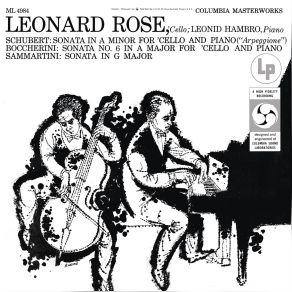Leonid Hambro
Wikimp3 information about the music of Leonid Hambro. On our website we have 5 albums and 5 collections of artist Leonid Hambro. You can find useful information and download songs of this artist.
Biography
[Edit]Leonid Hambro led many lives from behind the keyboard of a grand piano, crossing over from classical to popular music and back again, with side trips into comedy. The virtuoso was noted for his prodigious memory, improvising genius, and sense of humor — which enabled him to play straight man as Victor Borge and on the compositions attributed to P.D.Q. Bach — but also as the official pianist for WQXR, New York's premiere classical radio station for decades. He was born in Chicago in 1920, the son of Simeon Musicant, who was himself a son of Russian musicians (who changed his name to Hambro while using a borrowed identity card). The elder Hambro was a pianist who made part of his living playing accompaniment to silent films. Leonid was a child prodigy who gave his first recital in 1925, at the age of five years old. He later attended Juilliard and, in addition to studying there, was a frequent accompanist to other students. He served stateside in the Navy as a musician during the Second World War, after which he secured a Naumburg Foundation Award in 1946 — he was later appointed the pianist of the New York Philharmonic.
As a pianist, Hambro developed a huge repertoire, and knew almost all of them from memory, which he frequently demonstrated in his "Command Performances," where he gave a list of 100 pieces to audience members and allowed them pick the program from the list. He also put that facility to use in more pressing situations, such as substituting for an ill pianist in a concert of music by Paul Hindemith, conducted by the composer, at New York's Town Hall, for which he learned the complex work in question on 24 hours' notice. Hambro's skills also allowed him to serve as the serious half of a partnership with Victor Borge from 1961 until 1970, and generated a huge amount of laughter as well as immense interest in classical music. And he participated in even less conventional settings, such as teaming up with electronic music virtuoso Gershon Kingsley to record George Gershwin's "Rhapsody in Blue," as a duet for grand piano and Moog synthesizer, on the album Gershwin Alive & Well & Underground (1970). He participated in Peter Schickele's P.D.Q. Bach concerts, and also the Huffnung concerts, both long-established satires of classical music.
Around these engagements and recordings, he had a serious side, and toured extensively and appeared as a soloist with the orchestras in Boston, Philadelphia, Chicago, and London. He was also noted for his work as a chamber musician, and across his career performed with Fritz Kreisler, Jascha Heifetz, Isaac Stern, Leonard Rose, and Pierre Fournier. He was also a pianist for WQXR in New York for 17 years, and throughout the 1960s performed and recorded with another WQXR colleague, pianist Jascha Zayde. From 1970 until 1987, he was also the head of the piano faculty at the California Institute of the Arts.
Title: Gershwin - Alive & Well Underground
Artist: Gershon Kingsley, Leonid Hambro
Genre: Theatre/Soundtrack, Instrumental
Collections
Title: Bach - The 50 Best Classical Masterpieces
Genre:
Title: The 50 Greatest Classical Masterpieces
Genre:
Title: Ultimate Moog Collection
Genre: Jazz
Title: Cook's Tour of High Fidelity
Genre: Electronica
Title: Archy and Mehitabel: A Back Alley Opera
Genre: Theatre/Soundtrack













